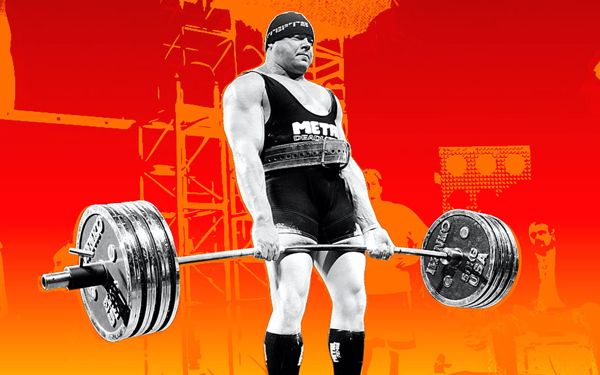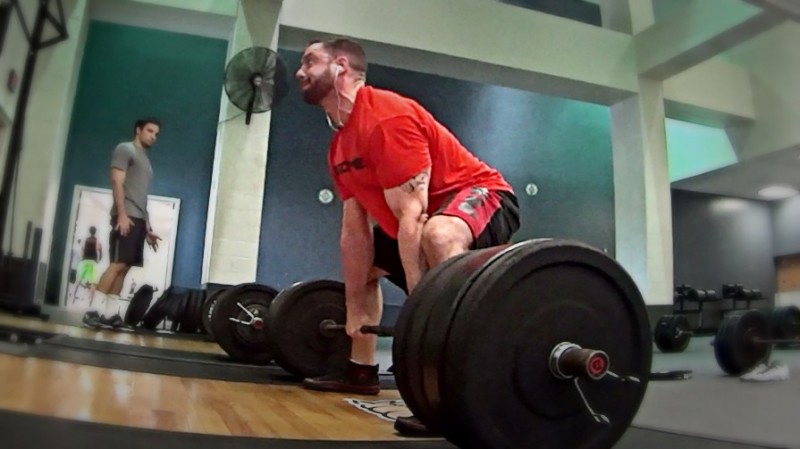
Training heavy all the time
Very few people can train the deadlift week after week and still make progress. I feel the only ones who can get away with this are the ones who're built to deadlift. If you're built to pull, then the stress on your system is going to be less than those who aren't built to deadlift.
The deadlift is a very demanding movement and it takes a lot to recover from. This is compounded if you're also squatting every week. The squat and deadlift train many of the same muscles and this is another reason why you don't need to train the deadlift heavy all the time.
Years ago the only deadlifts I did off the floor were in meets. The rest of the time was spent training the lower back, glutes, and hamstrings. While my deadlift increased 40 pounds over the first few years, I did run into some problems with this approach.
The major problem I had was when I'd go to a meet I didn't know where to place my feet and if I got stuck I didn't know how to adjust. Since I'm not built to deadlift, these things aren't natural to me. I had to find a way to put some pulling back in the program without taxing the system.
What we came up with was a session of speed deadlifts with a moderate weight pulled for five or six singles. This way the weight was heavy enough to teach good form and not too heavy to tax the system. This worked out to 45 to 50% of max to be trained after the dynamic or speed squat workout. These don't need to be done every week but should be used as the meet or test day get closer.
Not having enough air in your belly
As with most exercise you must learn how to breathe. Stand in front of a mirror and take a deep breath. Do your shoulders rise? If so, then you need to learn how to breathe.
Learn to pull your air into your diaphragm. In other words, use your belly! Pull as much air into your belly as possible, then when you think you have all you can get, pull more. The deadlift isn't started by driving your feet into the floor; it's started by driving your belly into your belt and hips flexors.
One note on holding air while you pull. You do need to try and hold your air as long as possible, but this can only last for a few seconds while under strain because you'll pass out. So for a long pull, you're going to have to breathe or you'll hit the floor and people will stare. While there are several people out there who may think this is a cool thing, I disagree.
It's much cooler to make the lift!
So when you reach the point where you begin to really have to fight with the weight, let out small bursts of air. Don't let it all out at one time or you'll lose torso tightness and cause the bar to drop down. By letting out small bursts you can keep your tightness, continue to pull, and lock out the weight.
Rounding the lower back
This is another mistake I see all the time and most lifters know better. It happens because of a weak lower back or a bad start position. While keeping your shoulders rounded you must keep your lower back arched. This will keep the shin straight and the shoulders behind the bar and keep your body in the proper position to pull big while keeping the back under minimal stress.
If you pull with a rounded back, the bar is going to drift forward away from the legs, thus putting you back into a very difficult position from which to recover. When the bar drifts forward, the weight of it will begin to work against your leverages and cause you to have a sticking point just below the knees or mid-shin level.
When you pull you can either arch your back in the beginning standing position before you crouch down to pull or once you grab the bar. Either way it's important to keep the lower back arched and tight.
There are many ways to strengthen the lower back for this. Good mornings, reverse hypers, and arched back good mornings are a few. You can also use a band around your traps and feet for simulated good mornings. With this technique you only use the bands and train for higher reps (in the 20 to 30 rep range) for local muscular endurance.
Pulling the shoulder blades together
This is a mistake I made for years. Stand in a deadlift stance and pull your shoulder blades together. Take a look at where your fingertips are. Now if you let your shoulders relax and even round forward a little you'll see your fingertips are much lower. This is why we teach a rounding of the upper back. First, the bar has to travel a shorter distance. Second, there's less stress on the shoulder region. It'll also help to keep your shoulder blades behind the bar.









